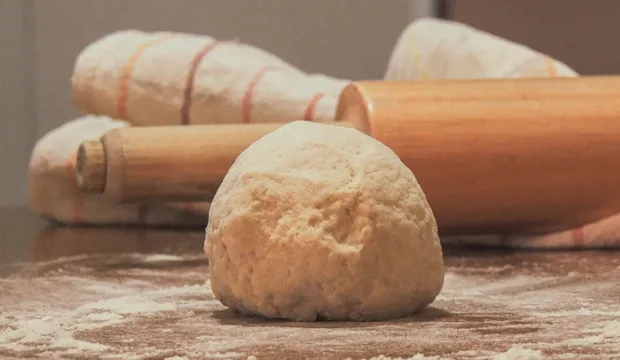
Create a retro lava lamp
Have a go at our mixtures and density experiment to create fun colour bubbles and explore science
Learn how to create a captivating retro lava lamp in this fun Christmas STEM activity for kids.
Gather the materials, ignite their curiosity, and prepare to be amazed by delving into the magical realm of lava lamps and uncover the science behind their mesmerising beauty.
Equipment you will need
- A jar
- Half a jar of sunflower oil
- Water
- Red food colouring
- Bicarbonate of soda or an effervescent tablet
- A torch
How to do it
Step 1 - First, pour the sunflower oil into the jar and fill it halfway.
Step 2 - Add the drops of food colouring to the oil. Do your best to add the food colouring as drops rather than a stream of colour.
Step 3 - Fill the rest of the jar with water. Put a torch behind the jar so the light shines through the liquid to add some atmosphere and create the lamp effect.
Step 4 - Lastly, add a teaspoon of bicarbonate of soda to the jar. Adding the bicarbonate of soda will create bubbles and get the liquid moving. Now you can relax as the lava lamp gets to work!
The science behind the experiment
Water, being denser than oil, naturally settles at the bottom of the jar while the oil remains afloat on top. Since oil and water do not mix, a distinct boundary forms between them.
Similarly, food colouring, being water-based, also has a higher density than oil, causing it to sink to the bottom of the jar. After adding water, the food colouring dissolves into it, and both substances accumulate beneath the oil layer at the jar’s bottom.
When we introduce bicarbonate of soda or an effervescent tablet, it reacts with the water, producing carbon dioxide gas bubbles that adhere to the water droplets, forming a less dense combination than oil. Consequently, this mixture ascends to the top of the jar.
At the top, the gas bubbles burst and escape into the air while the denser water descends to the bottom again.
The engineering context
Understanding the way different materials work and the properties they all hold is vital in creating and developing solutions to our world’s problems. Engineers are interested in the world around them and use these different materials as the basis of every solution they create.
Watch the IET video with ‘Science with Bexy’ and download the free activity sheet below.
All activity sheets and supporting resources are free to download, and all the documents are fully editable so that you can tailor them to your students and your schools’ needs.
The activity sheet includes teacher notes, guidance, helpful web links, and links (where appropriate) to the national curriculum in the four devolved UK nations; England, Northern Ireland, Scotland and Wales.
Oh ho ho, please share your experiment highlights with us @IETeducation! #SantaLovesSTEM.
Available Downloads
Videos
Create a lava lamp
Science with Bexy shows us how to create a lava lamp



